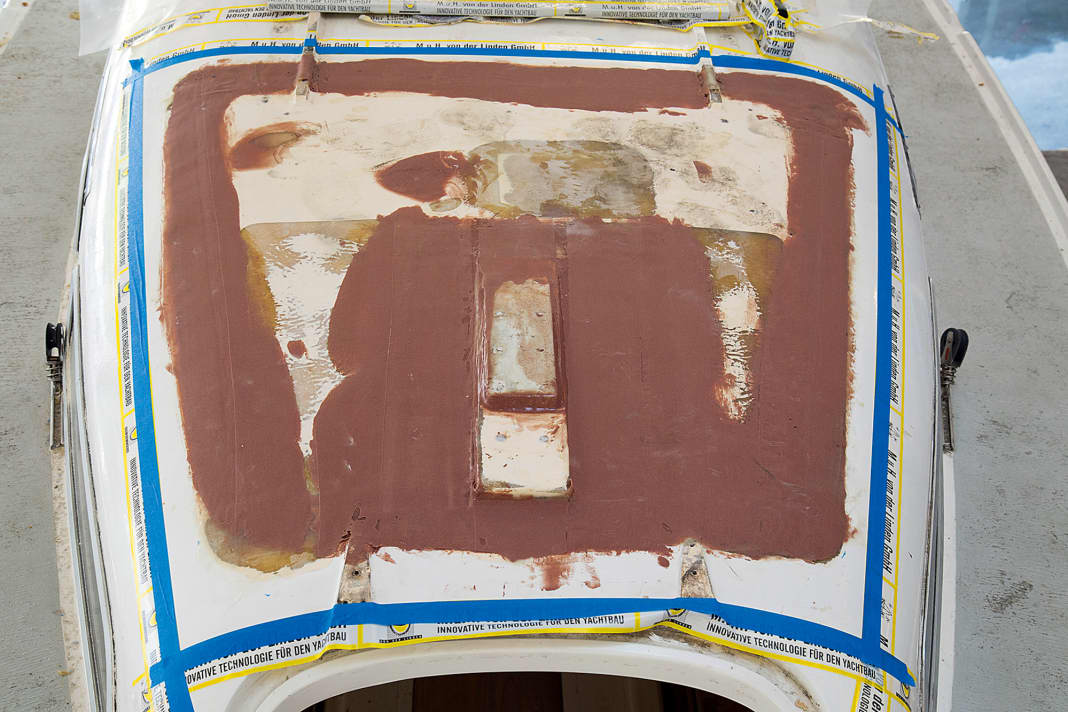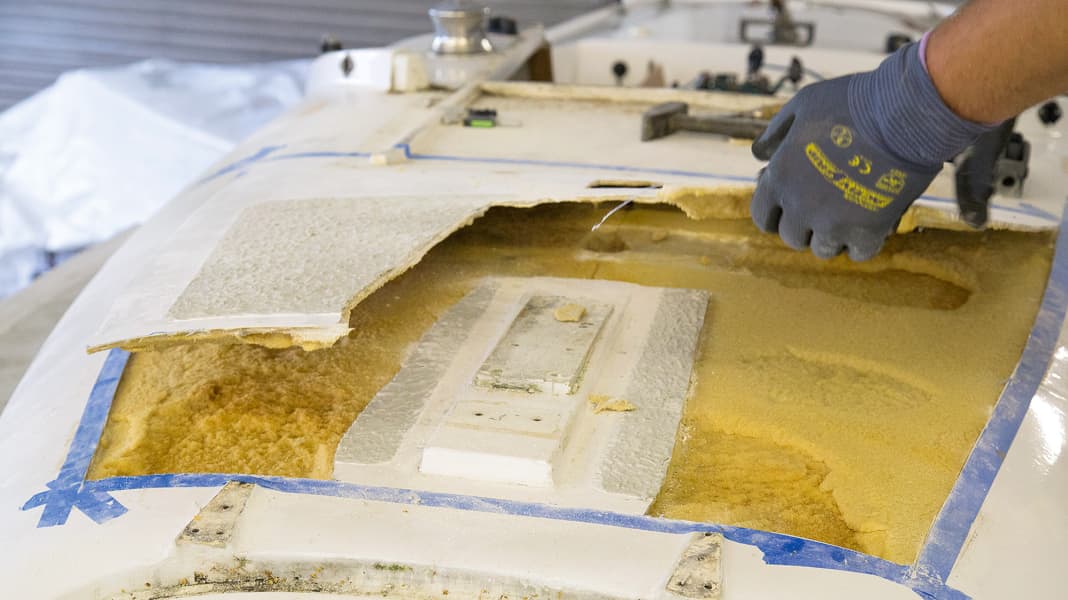
Decks in sandwich construction are a fine thing. The construction, in which the outer and inner laminate layers are separated by a core of balsa wood or foam, is not only lightweight but also very rigid. Incidentally, the composite also insulates much better than a solid laminate, which lowers temperatures in summer and protects against condensation in the off-season.
Every hole a leak
But where there is a lot of light, the downsides are not far away. With sandwich decks, the problems start with age. As soon as the laminate and core bond loosens, the construction rapidly loses strength. The tricky thing is that once the deck is weakened in one place, it works harder when running and sailing over it, and the damage can spread all the more easily. Many owners of older boats are familiar with this; it starts with a harmless crunching or squeaking. After a short time, the deck starts to bounce more and more and you literally sink in when you walk.
Apart from errors in the dimensioning or processing of resin and core material, water ingress is the main cause of sandwich deck failure. Moisture enters the deck through poorly sealed screw holes in fittings. Older teak decks are also critical. Often very little sealant has been used and the screwing of the bars easily adds up to several hundred holes.
Every core can be affected
Sandwich constructions with a balsa wood core are the most susceptible. The material soaks up from the leak and rots over a large area. The only thing that helps here is sawing open and replacing the core, of which there is usually only black peat left.
However, caution is also required with the much-praised closed-cell foam cores such as Airex or Divinycell. Water cannot spread so easily in such decks and the core does not rot. However, this does not mean that problems will not occur.
Depending on the quality of the polyester resin used, the moisture can lead to osmosis from the inside, causing the laminate to tear from the core. However, even a frosty winter is enough to literally crack the wet bond.
Repairing a delaminated deck requires a lot of effort - who likes sawing large holes in their boat? The biggest challenge, however, is to create a resilient structure again after removing the old core material.
For larger or highly curved areas, a vacuum pump would be ideal for bonding the core and cover shell evenly. As this technology is generally only available to professional companies, we have deliberately decided not to use it and have worked with weights instead.
The inner layer of the deck is often very thin and soft. In order to maintain the deck contour, it may need to be supported from below with an auxiliary construction before sawing. In our case, the ring former installed to reinforce the base of the mast was sufficient.
Repair and reinforce the deck: Step-by-step instructions
Limit damage, saw open deck
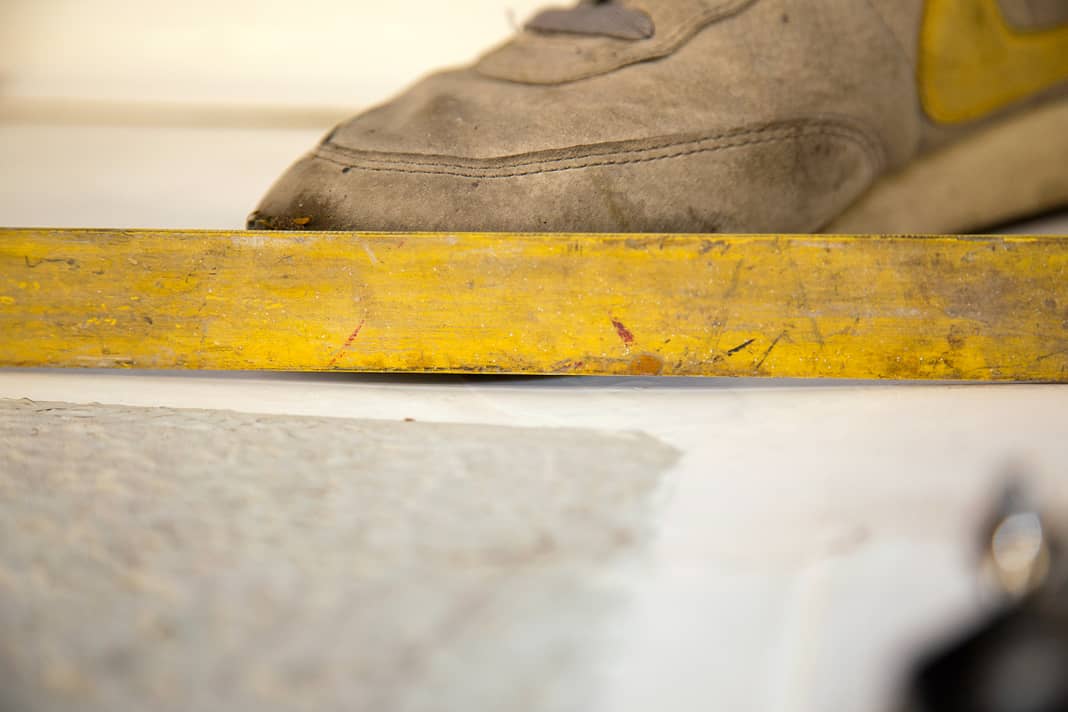





Remove the core
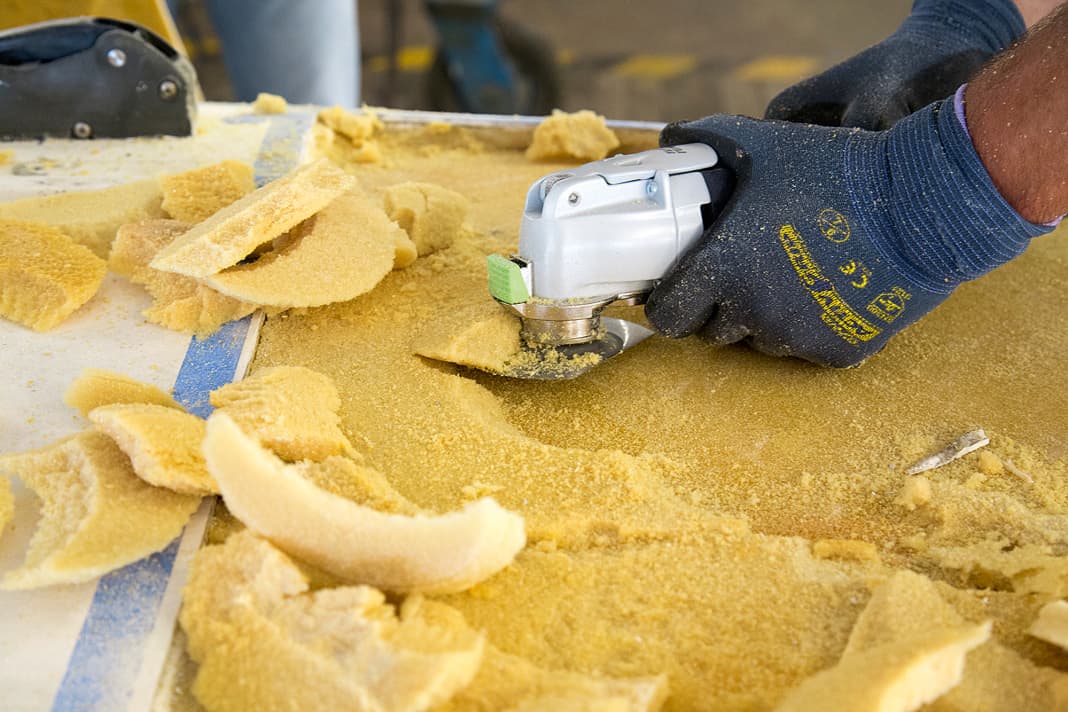





Preparing the deck shell
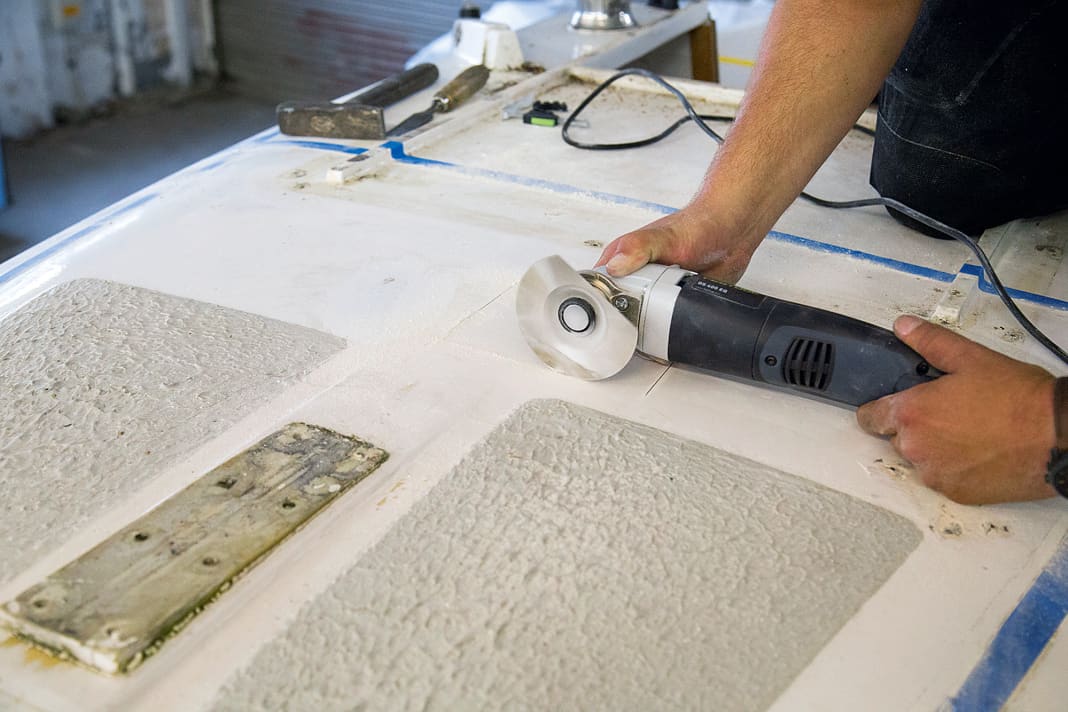





Replace the mast base
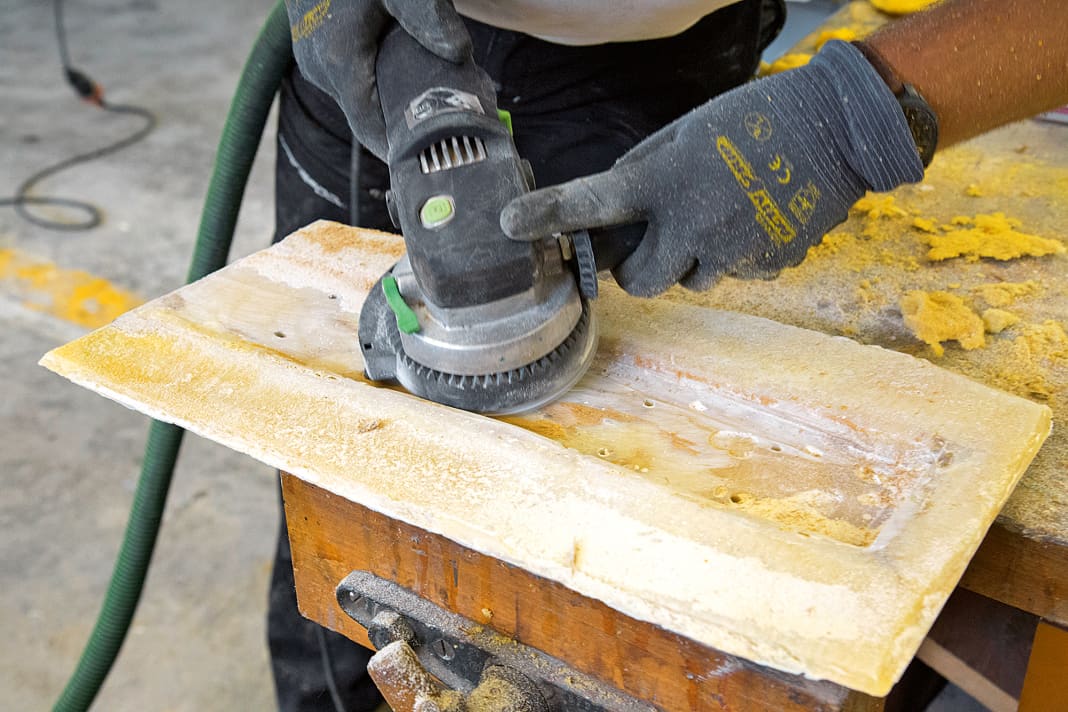





Insert the new core
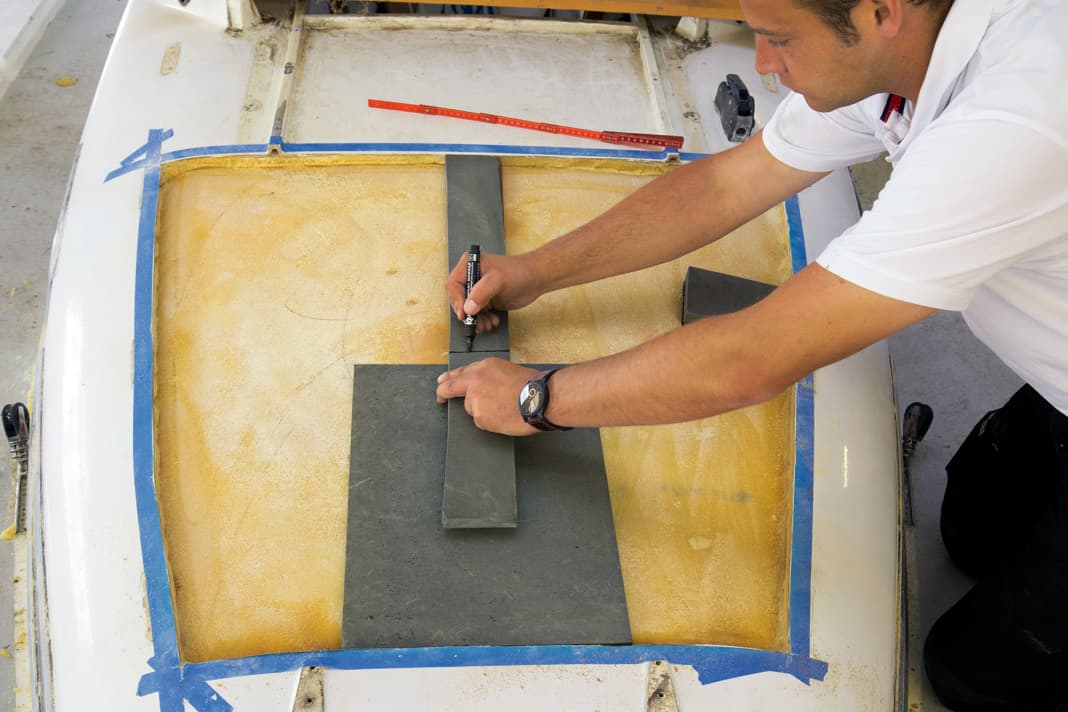





Replace the lid
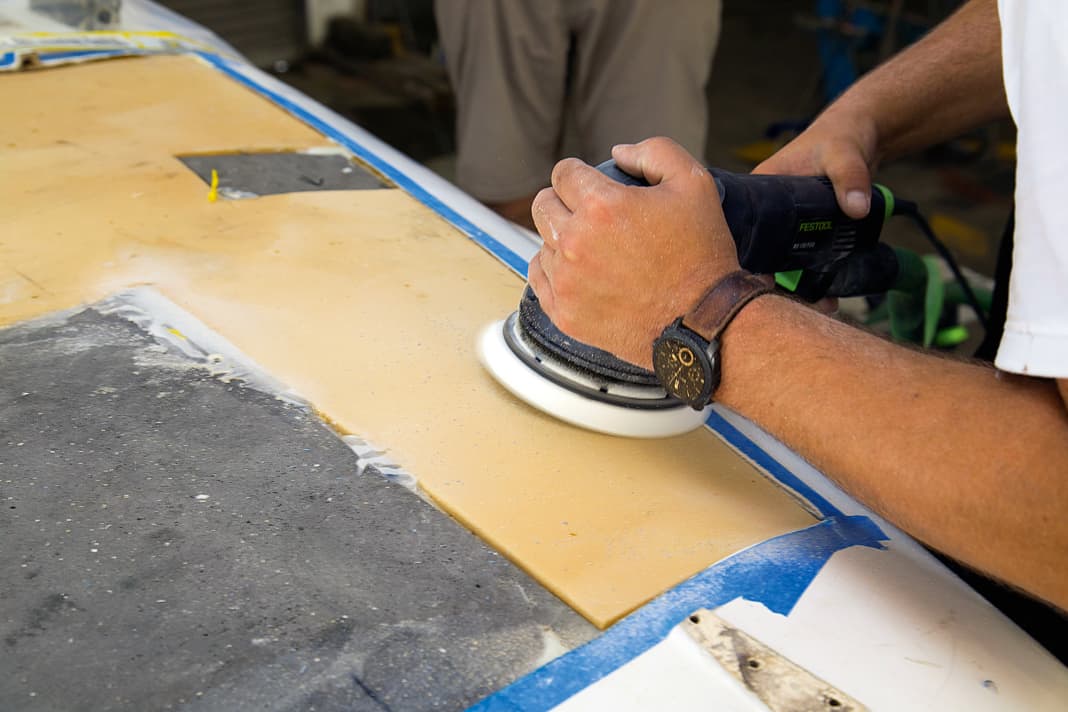





Seal joints
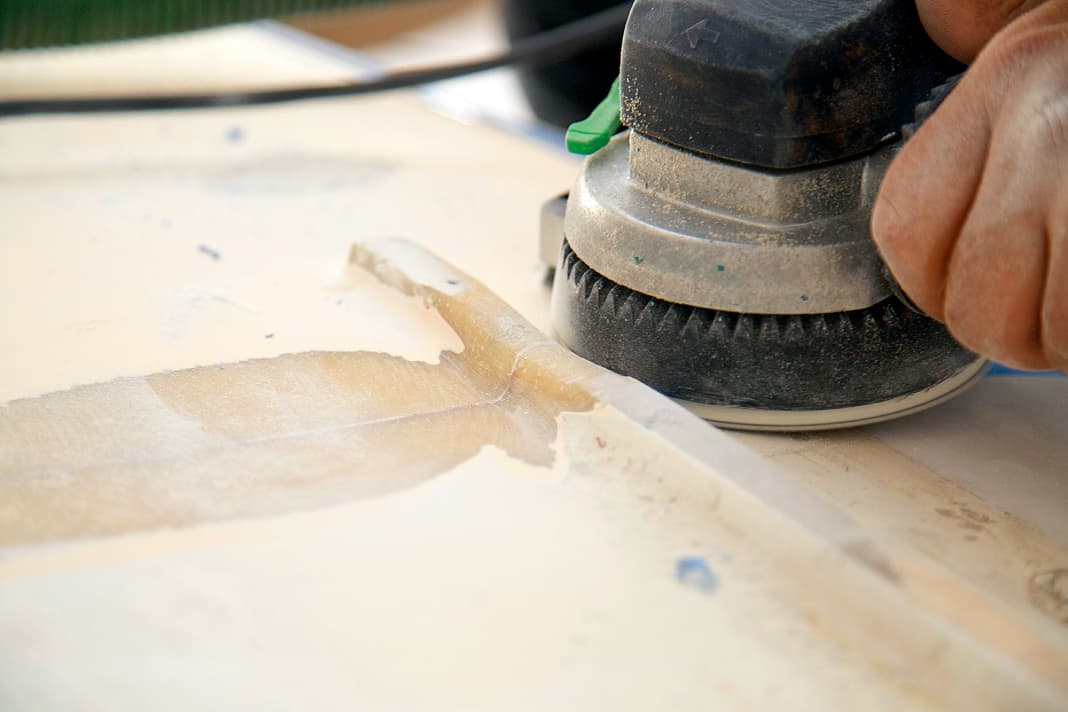





Finishing work
